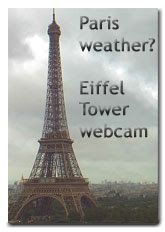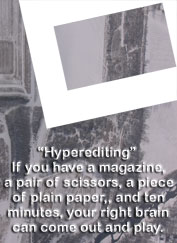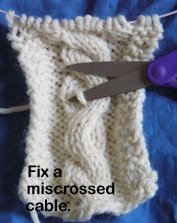Enjoying my big view from the hotel..... That tower at right is the Islamic Center, and that three-pronged spiky thing breaking the horizon about a quarter of the way in from the left edge is the Air Force Memorial.
Interesting what you could and couldn't see, as the haze came and went. We were here for several days before I noticed this........
We have walked up the hill to the zoo. This is a painting of a sloth bear, on the glass of an entryway to an information center/gift shop/etc. building.
Love the way it is holding its hind feet with its front feet. Hind foot claws above, front foot claws coming in from the left.... And if you look at its left feet you can see its doing the same thing. Awww. Cute. :-)
Sumac. I'm used to thinking of this as a cluster of fuzzy stuff. I don't know if this is a different kind than I'm used to, or just at an earlier stage of its life? This is very berry-looking. (Blown up considerably. Each "berry" about a quarter of an inch long.)
We had a lucky otter day. See the two otters at right center? They were clearly waiting for something to happen. So we waited, too. This keeper opened the top of the gate, and started throwing fish and clams to the otters.
We have moved around to the right of our previous vantage point. Here is an otter nom nom nomming on ... a fish?
From this vantage point (same as above) we are looking through plexiglas. This allows us an underwater view, but the plexi is covered with water spots and who knows what. The camera was very eager to focus on the dirty plexi rather than on the otters. (sigh)
This is the very best pic I got of an otter.
You can see how those whiskers would be helpful for finding crawfish and other food, when the water isn't as clean as this.
Eventually the keeper stopped throwing food. We moved back over to the left. This viewpoint is not obscured by plexi, but we are not as close to the otters. Trade-offs, trade-offs......
Note that these are the self-same otters. The difference in color between these pics and the ones above are due to the more-direct light, the plexiglas, and the water.....
So glad we happened by as they were getting ready to do a bunch of running/swimming/exploring/eating! Much more interesting than when they are napping.
And now for something completely different. There is a bridge over part of the elephant enclosure. We can stand up there and watch as long as we like.
As I mentioned when I was talking about my visit here on July 20, the elephants have a lot of space, for an in-the-city zoo. (The zoo is on Connecticut Ave -- this is some expen$$$ive real estate.....)
The elephants have choices about what to do, and with whom to hang out. It is good.
One choice elephants like to make is to throw stuff on their backs. I knew they liked to throw mud and dirt (helps keep the sun and the bugs off), but I didn't know they'd throw food up there. This one has a tasteful hay shawl. Skirt?
Now she's powdering her underneath bits with dust.
Another good option is the pool. You can drink, you can wade, and you can spray yourself.
Spraying, stopping for a bite to eat, having sip of water, spraying some more......
Water feels nice, on a hot July day in Washington, DC!
Once we've completed our ablutions, perhaps a spot of elevenses would be nice..... (This is the remains of the other elephant's shawl/skirt, which fell off as she walked here.)
Tearing ourselves away from the elephants................
On into the aviary. I failed to capture the info on this owl. The background makes it look like a desert dweller. It never opened the other eye while I took several shots. Resting, maybe, or maybe an injury or something. I do not know. It wasn't very big, as I recall. Less than a foot tall?
They have kiwi at the national zoo, and supposedly you can see them. Some of them. Who knows.
Kiwi are nocturnal. There is a very dark area you can go into, and supposedly see kiwi. But it is so dark in there that it's hard to make out anything at all. Even if you stand in there for a while in an attempt to let your eyes adjust.
I think I might rather see a sleeping kiwi in the light than see nothing but darkness.........
And, they have a baby kiwi. Somewhere. Probably at the "breeding and conservation center" which is NOT in the city..................
I was hoping to see a kiwi, and would have loved to see the baby. But no.
Here's the best I got to see -- a skeleton. And even this was behind "glass" which was covered with reflections. Sigh. You can see very nice clear images of kiwi skeletons on the web. Just google 'em up and then click to see images.
But I'm allowed to show you this one, because I took it, blur and all. Very long beak. And take a look at the size of that egg...........
Here's a closer look at the torso. There are a number of things I think are interesting about this. First, note that the ribs are flat and overlap (and are apparently stuck together). In the theropods-to-birds class I took they talked about how flying works much better with a rigid skeleton, and how bird ribs are often woven together (nevermind "just" overlapped). Of course this is a flightless bird, but looking at these ribs makes me wonder if its ancestors flew........
Kiwi clearly do not fly -- this tiny fragile thing I have sort of underlined here is the forelimb (it doesn't seem right to call it a "wing"!). T. rex wasn't the only one with huge legs and itsy bitsy forelimbs! Look at the size of the kiwi's legs, in comparison to its forelimbs............
Speaking of looking at the size of things........................ What about this? That's the egg, people. Ai yi yi. It hurts just to look at it, don't you think?
Here is a public-domain photo (taken in 1870) of a kiwi, an ostrich skeleton, and a dinornis skeleton, each with its egg. That kiwi egg is frighteningly huge.............. Poor little mama..........
(Wikipedia: "The giant moa (Dinornis) is an extinct genus of ratite birds belonging to the moa family. Like all ratites it was a member of the order Struthioniformes. The Struthioniformes are flightless birds with a sternum without a keel. They also have a distinctive palate. It was endemic to New Zealand.")
.








































No comments:
Post a Comment